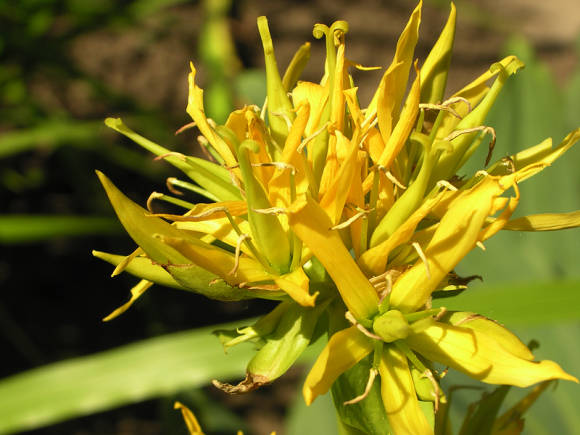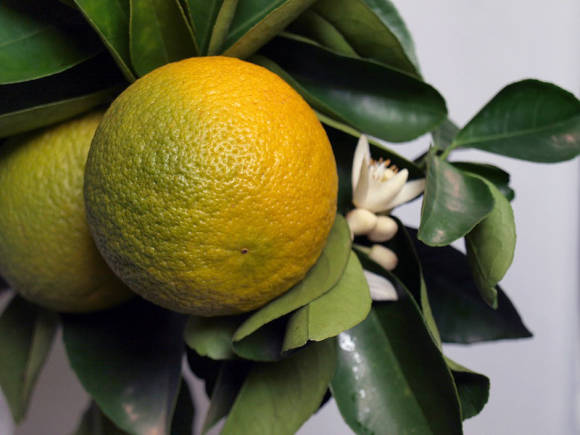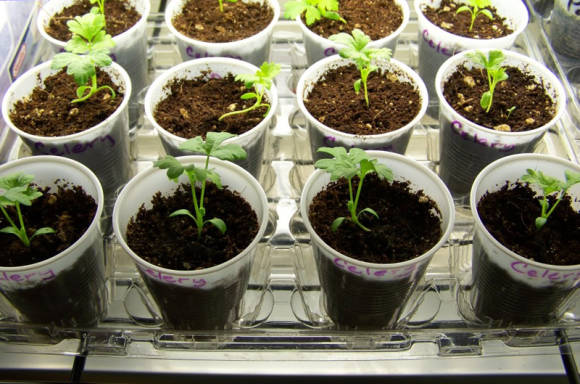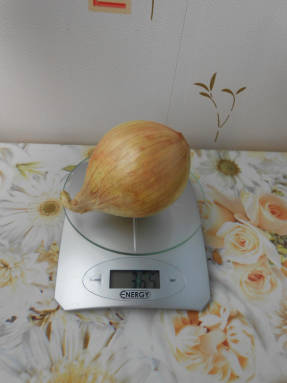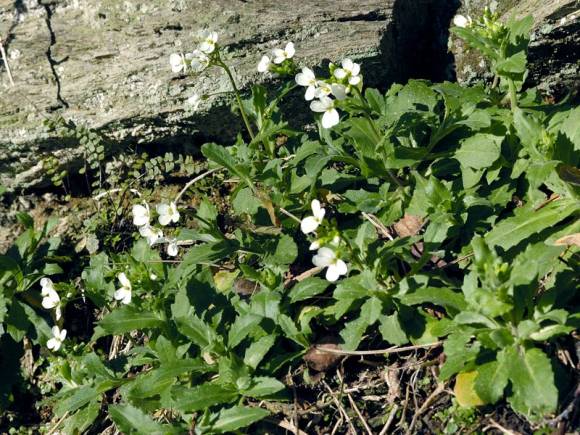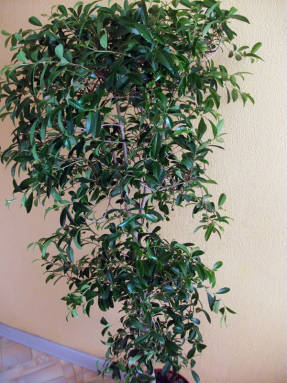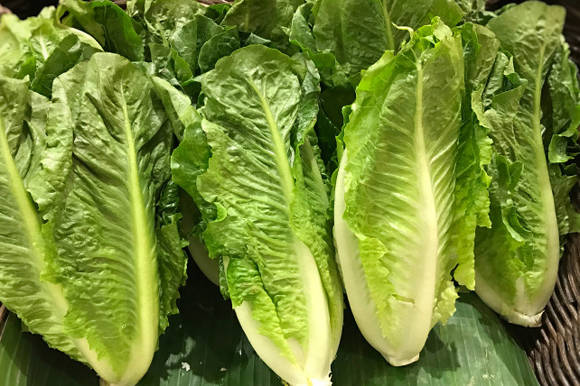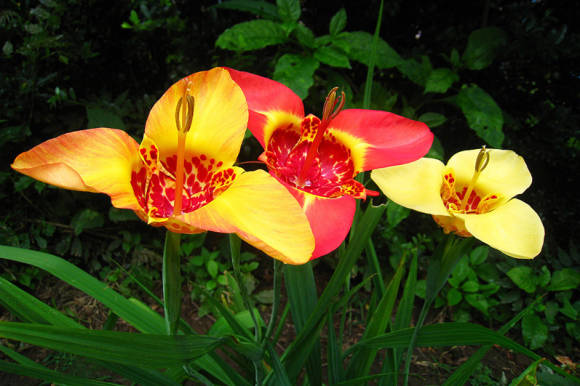 In recent years, the lakonos plant has appeared in many areas of amateur gardeners. Needless to say, the plant is very impressive, large, grows quickly after winter, and overwinters relatively well. It is important that it tolerates light shading. And on tiny 6 acres, where every sunny patch is given to vegetables, this is an important property.
In recent years, the lakonos plant has appeared in many areas of amateur gardeners. Needless to say, the plant is very impressive, large, grows quickly after winter, and overwinters relatively well. It is important that it tolerates light shading. And on tiny 6 acres, where every sunny patch is given to vegetables, this is an important property. The plant has several Latin names Phytolacca americana, syn. Phytolacca decandra, Phytolacca vulgaris and belongs to the family of the same name Phytolakkov (Phytolaccaceae).
Genus name comes from Greek phyton - plant and lacca, which means "varnish" in Italian – the juice of the fruit of the plant has a purple-red color. The native land of the plant is North America, now it is distributed across all continents as an ornamental plant. As a weed plant on the territory of our country, it is found in the Krasnodar Territory.
Phytolacca is a perennial herb with a multi-headed rhizome and a thick, fusiform root. Stems are straight, succulent, thick, branched, green or reddish, from 1 to 3 m in height. Leaves on short petioles, alternate, ovate-elliptical, tapered to the base. The flowers are small, regular, bisexual, five-petalled, at first white, later reddening, collected at the ends of the stems in dense cylindrical brushes. Fruits are juicy, berry-like, ribbed, violet-black, about 8 mm in diameter. And it is these fruits that lead summer residents into the temptation - the recommendations are very different: from jam and compote to wine. Well, of course, all parts of the plant are trying to heal. But is it worth doing? Let's try to figure it out.
 |  |
Phytolacca fruits contain phytolaccanin - a dye, the aglycone of which is phytoaccagenin, triterpene saponins, lignans, lectins. In the folk medicine of the countries where the plant originates, the fruits were used for skin inflammations, wounds and joint diseases. In the past, the fruit has been used as a food coloring to enhance the color of wine. Currently not used - numerous studies have shown that the fruits, if not poisonous, are definitely harmful.
Phytolacca root contains triterpene saponins, primarily phytolacosides A, B, D, E, F, G and phytolaccaosaponin B, lectins (containing cysteine glycoprotein) α-spinasterol, histamine, γ-aminobutyric acid. In folk medicine, the plant was used for rheumatism, dysmenorrhea, catarrh, inflammation in the mouth and respiratory organs, for syphilis, scabies and abscesses. The American Indians used the root as a laxative and for neoplasms. In the experiment, lectins from the roots stimulated the production of antibodies in B lymphocytes. But in the experiment, isolated, purified and strictly dosed substances are used. And the plant itself contains a whole list of not always useful compounds. At home, when water and alcohol extracts are obtained, a whole cocktail of substances, including saponins, which have an irritating effect, comes out into the solution.
 |  |
Poisoning most often occurs when eating fruits, especially by children, and when self-medicating with roots.
In case of poisoning, there is a strong burning sensation in the mouth and stomach, perspiration and scratching in the throat, cough, nausea, persistent vomiting, severe diarrhea, general weakness, respiratory failure up to a stop, slow pulse, weakness. In general, as you can see, there is little pleasant.
In case of poisoning, treatment includes gastric lavage with 0.1% potassium permanganate solution, 20% camphor solution subcutaneously (2 ml), 20% caffeine-sodium benzoate (2 ml subcutaneously). For convulsions, chloral hydrate is prescribed in enemas with mucus (0.5 g), oral barbiturates. To eliminate dehydration, isotonic sodium chloride solution (up to 1.5 l), etc. (Efremov, 2001).
But homeopathic medicines are completely harmless.In homeopathy, phytolacca is used for influenza infections, diseases of the oral cavity and upper respiratory tract, lymphatic system, diseases of the female genital area. The roots are used as raw materials, but the concentration in homeopathic remedies is so low that there will be no harm to the body. But homeopathy is a delicate matter, and it is very difficult to find the drugs yourself.
And therefore, it is better to grow phytolacca only as a spectacular ornamental plant, while not planting it in a place accessible to children, so that there is no temptation to try the berries.
It is very easy to grow this plant. Seeds are sown in a pot in March, and then young plants are dived into separate pots - the root of the plant is fleshy, pivotal and does not like very much when it is damaged. That is why plants in adulthood practically do not tolerate transplantation.
In June, plants are planted in the ground at a distance of 60-70 cm from each other. It is better to choose a place with a deep soil horizon and without stagnation of water in early spring, that is, the site should be well drained. This is the key to a successful wintering. Plants can be planted in groups or even single specimens in partial shade.
Care consists in feeding and watering, and in the fall it is necessary to cut off the aboveground mass and you can sprinkle the plantings with a layer of compost - warm and nutritious.
